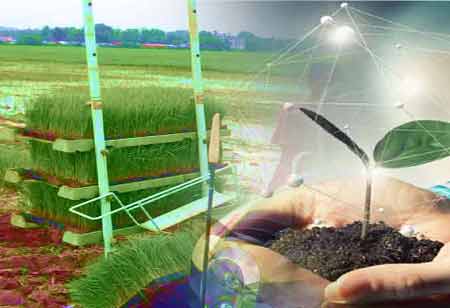Thank you for Subscribing to Agri Business Review Weekly Brief
How Farms can Reduce their Greenhouse Gas Emissions
Even though reducing a farm or estate's carbon footprint is a long-term process, there are some quick wins that can be achieved.

By
Agri Business Review | Monday, April 03, 2023
Stay ahead of the industry with exclusive feature stories on the top companies, expert insights and the latest news delivered straight to your inbox. Subscribe today.
Farms can significantly reduce their greenhouse gas emissions by adopting renewable energy sources, utilizing fertilizer more efficiently, and reducing energy consumption.
FREMONT, CA: Even though reducing a farm or estate's carbon footprint is a long-term process, there are some quick wins that can be achieved.
Focusing on improving technical performance is arguably the best way for individual farmers to reduce their carbon footprint. Agriculture has largely been discussed in relation to land use changes recommended by the Committee on Climate Change as a way to reduce emissions.
At the macro level, this is significant, and land use changes are needed to meet net zero targets, but it is unlikely to be the starting point for most farmers. The decision to change land use cannot be rushed, so for many, the focus will be on improving technical performance.
Increasing farm productivity to reduce carbon emissions: Increasing productivity allows farmers to use their resources more efficiently, reducing emissions per tonne of the crop, a kilo of meat, and a liter of milk. As a result, they can identify where land can be freed up for alternatives that are known to increase carbon sequestration, such as woodlands and bioenergy crops.
Renewable energy sources are likely to play a crucial role in any strategy for reducing agriculture's emissions, reducing electricity costs while potentially generating new revenue.
Making small improvements in technical performance across the board can help farmers become more efficient and reduce costs.
Efforts to reduce carbon emissions in rural areas: Changes to any farming system should be made gradually to determine which practices have the greatest impact on margins and determine which practices are having the greatest impact. Climate change is not the only factor to consider when changing farming systems. Other factors include animal welfare, pollution, and biodiversity.
Farmers can, however, take practical measures to reduce greenhouse gases by sector, such as:
By improving fertilizer use, emissions can be reduced: Optimising fertilizer applications to cut the amount needed without reducing yields can have a significant impact on reducing greenhouse gas emissions from arable farming systems using inorganic fertilizers.
Most farmers achieve a nitrogen use efficiency of around 60 percent, but 80 percent is achievable – mainly through more scientific matching of the crop's need with applications, taking action to reduce losses through volatilization and nitrification, and applying the right rate at the right time. Precision farming techniques that allow for variable rate application of fertilizers will also improve efficiency and reduce waste. Another possibility is to switch from urea to fertilizers with a smaller carbon footprint.
Poultry and pig
Reducing energy consumption to reduce emissions: Although pigs and poultry have a lower carbon footprint than beef or sheep, there are still opportunities to reduce emissions. Heating and ventilation systems in such systems often require a lot of energy, so renewable energy options are already common. Investing in better insulation and lighting can improve the performance of buildings further.





